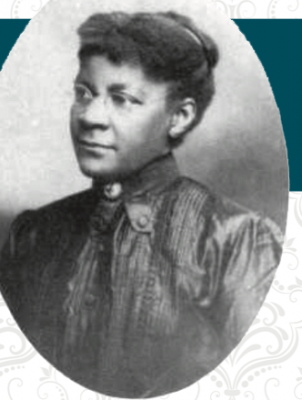'The Water Queen'
Remembering Sarah Gammon Bickford during National Women’s History Month
Five women made headlines running for the 2020 democratic nomination for president. Jeannette Rankin, a republican from Montana, was the first women elected to the House of Representatives. Sarah Gammon Bick- ford was the first woman in Montana, and probably the only female African American, to own a utility company in Virginia City.
Dr. Bill Peterson, Dr. Orlan Svingen and student Laura Arata from Washington State University worked on ‘finding Sarah Bickford’ during the 2010/2011 academic year. They received a grant from the Partnership in Scholarship through the National Trust for Historic Preservation to research African American involvement in communities that may have been overlooked by history, like Virginia City, Mont.
History of individual slaves can be difficult, almost impossible, to uncover. There are few first-person accounts and many that do exist are from the owner’s perspective, a white man. Furthermore, names of slaves changed with ownership and they were often given nicknames by their masters.
Sarah was called Sallie. Her whole name could be written as Sarah Blair Gam- mon Brown Bickford. Each name came from a different man and shows changes in her life as she rose to becoming a prominent and respected Virginia City woman.
John Blair Sr. was a Justice of the Peace in Washington County, Tenn. Washington County had no formal government protection in the late 1700s and the State of Franklin, encompassing the county, was formed as a way to ameliorate budding concerns. It missed becoming the 14th state of the Union in 1785 by one vote.
John Blair III remained in Washington County for the entirety of his life and was Sarah’s master. Her parents were sold at one point and she never saw them again.
Blair Sr. and Nathan Gammon, a steamboat merchant and freight business operator, were both residents of Jonesboro, Tenn, Washing- ton County’s seat. Gammon moved to Knoxville and brought his slaves with him, two named Isaac and Nancy married by common-law.
Nancy, by some accounts, was Sarah’s aunt. Gammon allowed Isaac to raise hogs, unusual as it was illegal for slaves to own property. After the war, Isaac filed a reparation claim after Union soldiers killed his hogs. After his death, Nancy won $330 in the settlement, approximately $5,000 today.
Sarah was freed by the Emancipation Proclamation and moved to Knoxville to be with Nancy. Another account explains Sarah’s arrival with the Gammons due to marriage—Gammon’s oldest daughter married the son of Blair III.
In Knoxville she met John Luttrell Murphy, an appointed justice of the Virginia City Territorial Supreme Court. In exchange for nanny services, Sarah was granted a ride to Montana, to unknown territory. “Her resourcefulness and pleasant manner enabled her to adjust to western ways,” an excerpt from Pioneer Trails and Trials read.
In Virginia City, Sarah married John Brown, an African American miner, in 1872. They had three children, the two oldest boys died early from diphtheria, and an awful relationship. Sarah sued Brown for abandonment and abuse and filed for divorce, an unbelievably rare thing for a woman to do in the late 1800s.
It was not the first or the last unbelievably rare thing she would do.
She was granted the divorce and full custody of her remaining daughter, seven- year-old Eva. She went on to fill the positions women held in mining camps that kept things running by opening a bakery, restaurant and hotel.
Eva died two years later. Sarah kept a picture of her in her bedroom until she died.
Sarah remarried to Stephen Bickford, a white miner and farmer, in 1863. They had four other children and a happier relationship. Sarah’s first family never left her mind—her daughters recounted later how she would tell stories of the family she lost, and of her work for Mrs. Laurin, namesake of Laurin, Mont.
Bickford had a mind for business and the couple bought two thirds of the Virginia City Water Company.
After Bickford died in 1900, Sarah bought the remaining third of the water company and was henceforth the owner.
“She took a correspondence course in Business Management from a correspondence school in Scranton, Pennsylvania to become more capable of conducting the affairs of the water business,” Pioneer Trails and Trials said.
Her knack for understanding people’s curiosities was apparent, too. She purchased the Hangman’s Building as her office and charged those inclined to look up at the beam that hung five road agents, an expose of early vigilante law. She even constructed a restroom in the facility, catering to affluent women traveling to Yellowstone National Park.
Her name appeared all over The Madisonian while she lived in Virginia City. People owed her money, a daughter graduated high school, she managed estates and she entertained guests. She even was listed as a person eligible to vote in a local election in 1916.
In a couple different instances, she had to defend her ownership of the water company. In 1913, an ‘unreliable report’ in the paper stated the town of Virginia City was trying to claim ownership of its water. Sarah’s composure would not let that slide.
She died July 1931.
Her obituary in The Madisonian, in part, read: “the sudden death Sunday of Mrs. Sarah Bickford, owner and proprietress of the Virginia City Water company, cast a distinct gloom over the community, which feels, in her passing, the loss of one of its most loyal pioneer citizens and devoted mothers.”

